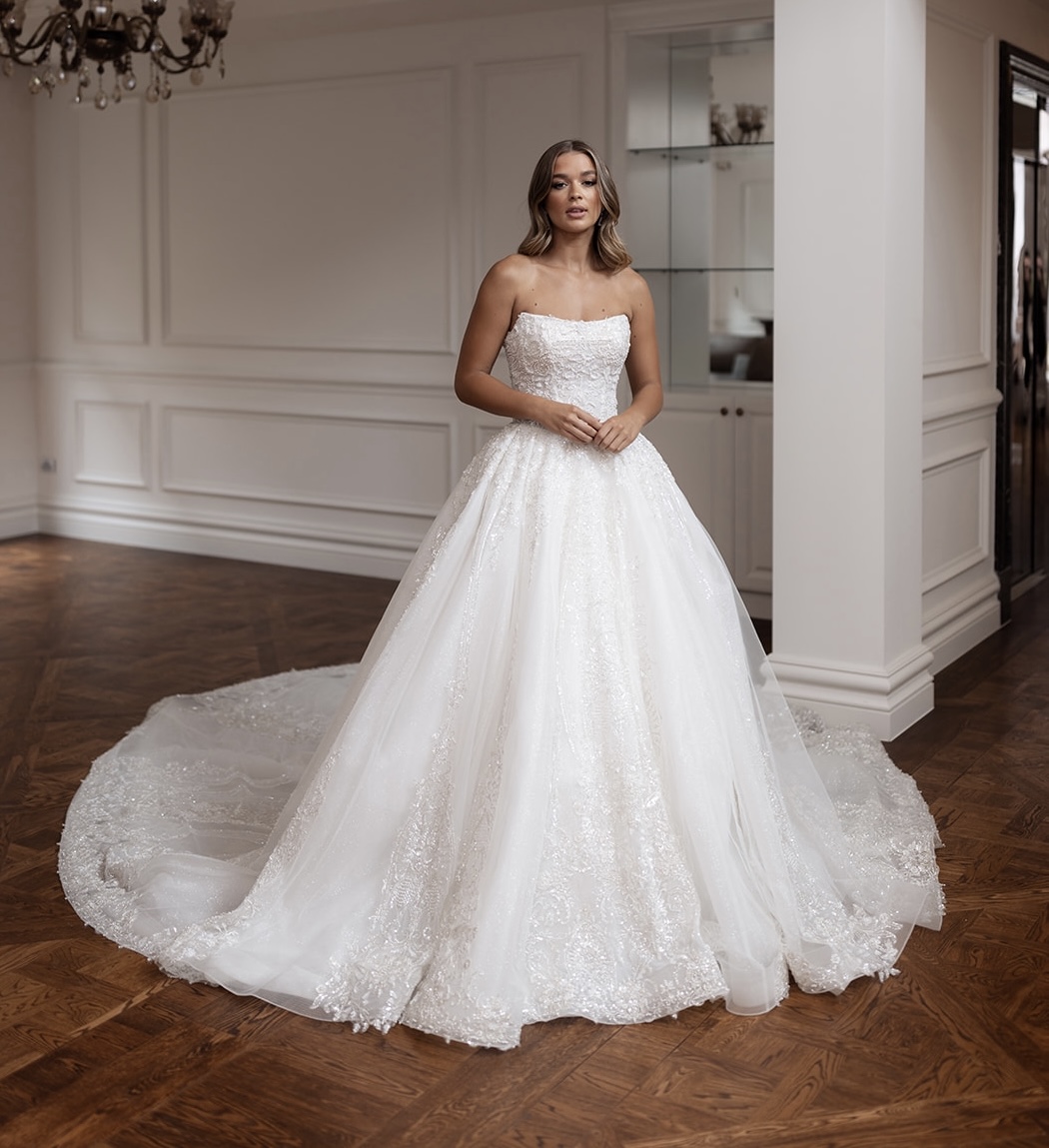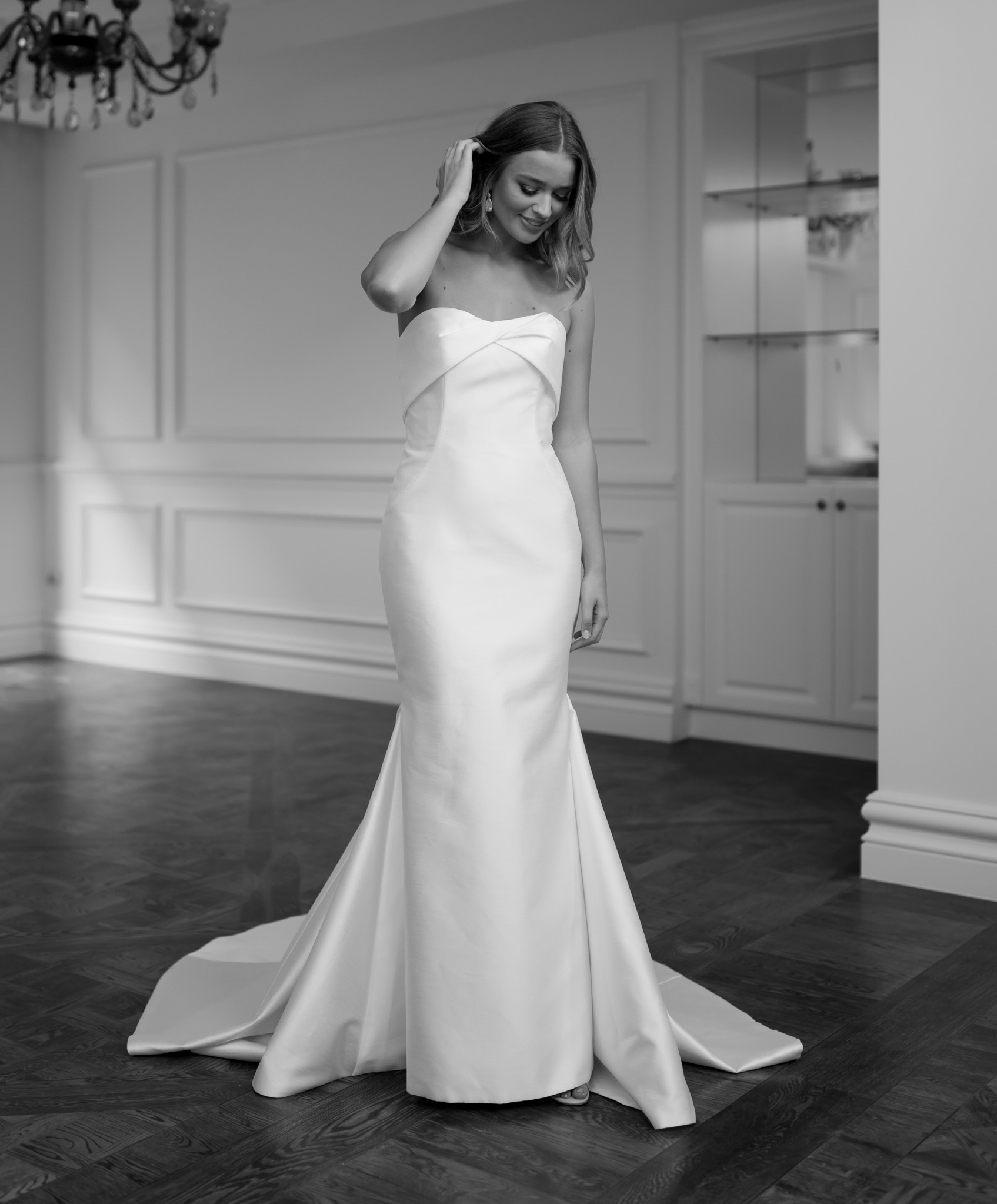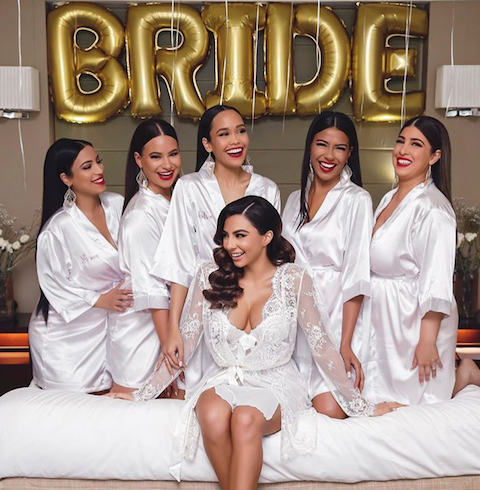The Composition of A Wedding Dress
Choosing your wedding dress can feel a little terrifying. It can be overwhelming since there are so many wedding dresses to choose from, and there are so many details to consider. We have put together a summary of the structure of a wedding dress to help you decide on your dream wedding dress. Hopefully, this prepares you when you come in for your bridal consultation at Belle et Blanc.
Silhouette
This is where you should begin when searching for the perfect wedding dress. Start by choosing a silhouette. Factors like venue, season, body type and personal aesthetics can help you pick the silhouette. Examples of silhouettes available include A-line, ball gown, fit & flare, mermaid, princess, and sheath. However, it is important to try out various silhouettes first before ruling them out right away.
Neckline
This is an important detail to consider. Depending on the neckline of your dress, you can decide on the accessories that you will be wearing. In some cases, the dress alone is enough. The neckline of your wedding gown also has a huge impact on what bra you need to wear. Choosing the right neckline can flatter your body type and complete your aesthetics. Examples of necklines: Sweetheart, straight, bateau, off-shoulder, v-neck, halter, high neck.
Fabrication
The fabric of a wedding dress is arguably the most important element to consider. Fabric determines the movement and formality of your bridal gown. Satin is a go-to fabric as it adds structure and drama. It is great for weddings in cooler weather due to its heavy material. Other fabric includes lace, tulle, organza, silk chiffon and crepe.
Sleeves
There are a variety of wedding dress sleeves to consider. From tank sleeves to cap sleeves, strapless to short sleeves, and flared bell sleeves to long sleeves.
Waistlines
Wedding dresses come in various waistlines too. Different waistlines flatter different body types.
- Natural waist: waistline falls at your natural waist, minimising a long torso or highlighting a narrow waist.
- Empire waist: a classic waistline that is situated under the bust. It elongates the body, disguises larger waistlines and accentuates a larger bust.
- Fitted waist: waistline falls at natural waist. It emphasises naturally small waists, thus creating the illusion of a cinched waist.
- Dropped waist: generally extends a few inches past the natural waist, or to the hip. It elongates the body and helps create width around the hip area.
- Asymmetrical waist: this style camouflages any imperfections, creating the illusion of a naturally small waist.
- Basque waist: waistline begins at the natural waist and dips into a V or U shape, elongating the torso while minimising the waist.
Train
Nothing makes a bridal statement like a sweeping train. Long trains give that major wow factor, whereas short trains and custom bustles allow for freedom of movement.
- Sweep/Brush: trails about 6 inches on the floor.
- Chapel: sweeps between 12 to 18 inches on the floor.
- Cathedral: extends 22 or more inches.
- Semi-cathedral: half way between a Chapel and a Cathedral.
- Royal: think Princes Diana’s train.
This summary is just a brief guide for your understanding. It is highly recommended that you come in for a bridal consultation to try on the dresses, so you can pick out the wedding dress of your dreams! In the meantime, please check out our collection online.





